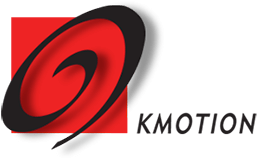One Simple Way to Help Reduce Financial Stress in the Workplace
The need to reduce financial stress in the workplace continues to be a challenge for both employees and employers. According to the 2020 Willis Towers Watson Defined Contribution Plan Sponsor Survey, the financial well-being of their employees, and the potential impacts on their organizations, is a top concern for many sponsors. Just over 33% indicated financial stress among workers was creating current workforce challenges — an increase from 26% in their 2017 survey.
PwC’s 2020 Employee Financial Wellness Survey asked employees what they feel causes them the most stress. 58% of the respondents cited financial matters more than any other life stressor combined. Half of those respondents said it’s been a major distraction at work.
What’s got employees stressed? The survey found that employees are primarily seeking guidance on how to prioritize their spending and manage debt – all fundamental basics of personal financial management. Now more than ever, employers and plan advisors have a unique opportunity to help employees get a handle on the basics of financial planning and empower them to ease the burden of financial anxiety at work.
When addressing basic financial planning education needs of employees, Kmotion recommends starting with fundamental materials that address the basics of budgeting. An easy introductory topic might be building an emergency savings account. PwC’s 2020 Survey found that 38% of employees have less than $1,000 saved to deal with unexpected emergencies. When the data is broken out by generation, it’s obvious that it’s a universal challenge among all employees: 62% of Gen Z employees have less than $1,000 saved for emergencies, followed by 37% of both Millennials and Baby Boomers, and 34% of Gen X.
Whether it’s through an educational flyer, a 401(k) newsletter article, part of an overall “Budgeting Basics” workshop, or some other communication vehicle, Kmotion recommends the following key educational concepts to convey to employees about emergency savings:
- Aim to have 3-6 months of living expenses saved
- Keep savings separate from your checking account
- Open an account with no (or very low) transaction fees, as well as no penalties for withdrawals
- Try to find an account that pays interest earnings on the balance
Looking to help reduce financial anxiety in the workplace? Kmotion’s retirement and financial wellness educational materials can help you tackle the first step: teaching employees the importance of building an emergency savings account. Explore kmotion.com or contact us today at 1.877.306.5055 for more information!

